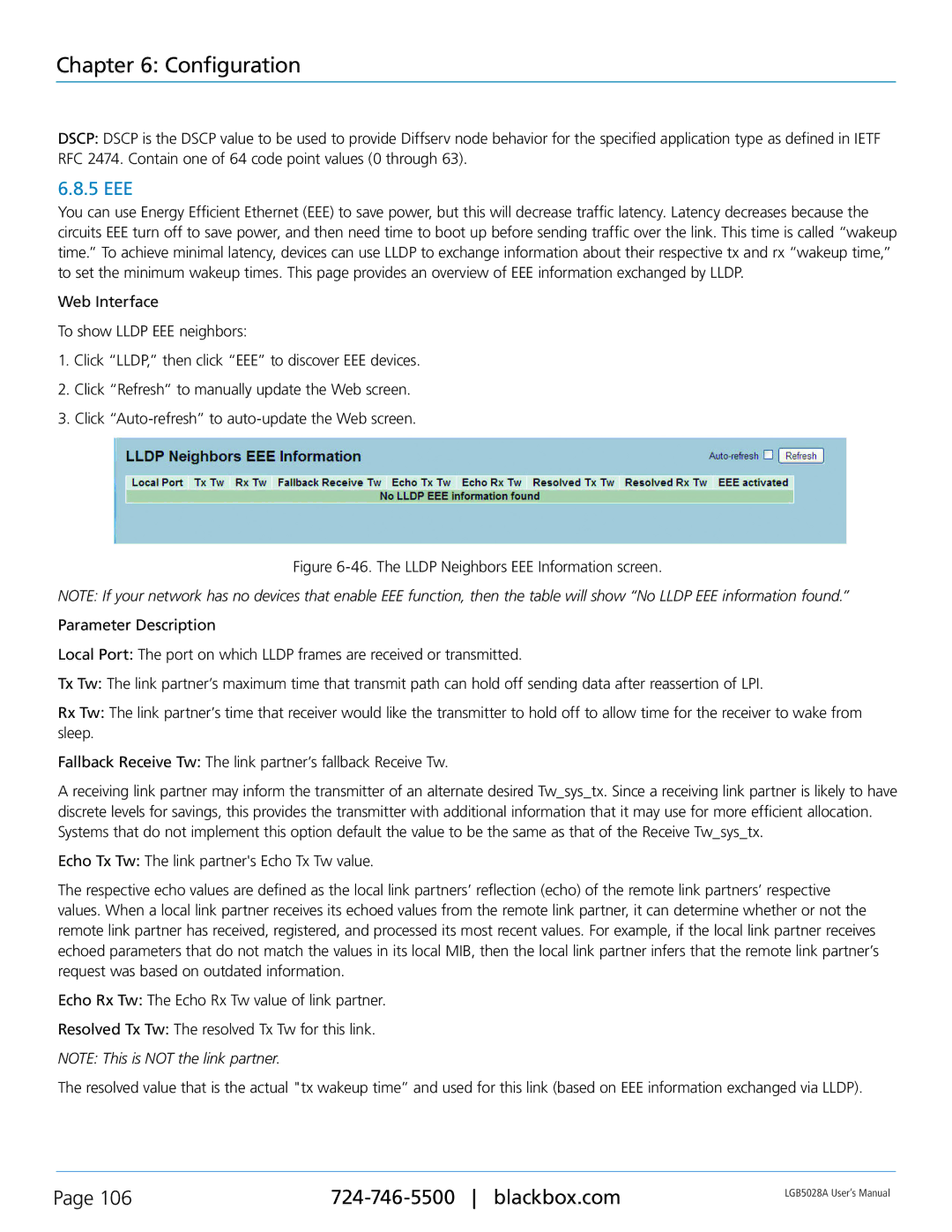
Chapter 6: Configuration
DSCP: DSCP is the DSCP value to be used to provide Diffserv node behavior for the specified application type as defined in IETF RFC 2474. Contain one of 64 code point values (0 through 63).
6.8.5 EEE
You can use Energy Efficient Ethernet (EEE) to save power, but this will decrease traffic latency. Latency decreases because the circuits EEE turn off to save power, and then need time to boot up before sending traffic over the link. This time is called “wakeup time.” To achieve minimal latency, devices can use LLDP to exchange information about their respective tx and rx “wakeup time,” to set the minimum wakeup times. This page provides an overview of EEE information exchanged by LLDP.
Web Interface
To show LLDP EEE neighbors:
1.Click “LLDP,” then click “EEE” to discover EEE devices.
2.Click “Refresh” to manually update the Web screen.
3.Click
Figure 6-46. The LLDP Neighbors EEE Information screen.
NOTE: If your network has no devices that enable EEE function, then the table will show “No LLDP EEE information found.”
Parameter Description
Local Port: The port on which LLDP frames are received or transmitted.
Tx Tw: The link partner’s maximum time that transmit path can hold off sending data after reassertion of LPI.
Rx Tw: The link partner’s time that receiver would like the transmitter to hold off to allow time for the receiver to wake from sleep.
Fallback Receive Tw: The link partner’s fallback Receive Tw.
A receiving link partner may inform the transmitter of an alternate desired Tw_sys_tx. Since a receiving link partner is likely to have discrete levels for savings, this provides the transmitter with additional information that it may use for more efficient allocation. Systems that do not implement this option default the value to be the same as that of the Receive Tw_sys_tx.
Echo Tx Tw: The link partner's Echo Tx Tw value.
The respective echo values are defined as the local link partners’ reflection (echo) of the remote link partners’ respective values. When a local link partner receives its echoed values from the remote link partner, it can determine whether or not the remote link partner has received, registered, and processed its most recent values. For example, if the local link partner receives echoed parameters that do not match the values in its local MIB, then the local link partner infers that the remote link partner’s request was based on outdated information.
Echo Rx Tw: The Echo Rx Tw value of link partner.
Resolved Tx Tw: The resolved Tx Tw for this link.
NOTE: This is NOT the link partner.
The resolved value that is the actual "tx wakeup time” and used for this link (based on EEE information exchanged via LLDP).
Page 106 | LGB5028A User‘s Manual | |
|
|
